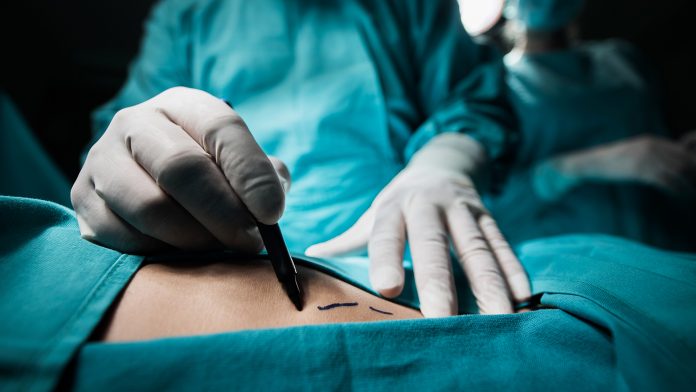
A technique called abdominal etching can help to create the classic ‘six-pack abs’ that so many desire, but is power-assisted liposuction the answer to a better physique?
Even with a good diet and workout routine, some men and women have trouble getting the toned abdominal appearance they want. For such patients, a technique called abdominal etching can help in creating the classic ‘six-pack abs’ physique in men or three-vertical-line abdomen in women, reports a study in the April issue of Plastic and Reconstructive Surgery, the official medical journal of the American Society of Plastic Surgeons (ASPS).
Power-assisted liposuction
The procedure uses precisely targeted power-assisted liposuction to achieve greater definition of the abdominal muscles, according to the paper by Tarik M. Husain and colleagues, of University of Miami Leonard M. Miller School of Medicine, USA.
Husain explains: “Abdominal etching using power-assisted liposuction is a novel method of sculpting an ideal abdomen,”
“Our study shows that this is a safe and effective method to create a defined anterior abdominal wall in both male and female patients.”
Emerging liposuction technique produces abdominal ‘six-pack’
The researchers review their experience with liposuction to improve the appearance of the abdomen in 50 patients: 26 men and 24 women, average age 36 years. Patients seeking abdominal etching were in good shape, with a healthy diet and regular exercise routine, but had “certain resistant areas of fat” that made it difficult to achieve the abdominal muscle definition they desired.
Dr. Husain and co-authors outline the procedure in detail, starting with patient selection and preoperative mark-up. Following meticulous liposuction technique, the plastic surgeon sculpts the abdominal fat in both the superficial and deeper layers, accentuating the patient’s natural “six-pack” lines in males and 3 vertical lines in females.
The authors spell out critical steps for postoperative care. Foam dressings are cut to size to compress the newly etched lines for at least three days. This is followed by full-time compression for two weeks postoperatively and two weeks part-time after that.
It is critical to have regular follow up early on to assess for any fluid collections, or seromas. To ensure good results, these seromas – typically regarded as a minor complication – need to be treated aggressively if they occur.
Patients can resume light exercise not engaging the core after two weeks, and more rigorous exercise after four weeks. The researchers stress the importance of maintaining good long-term results, with the assistance of a sports nutritionist and/or integrated medicine physician to optimise nutrition, exercise plan, and hormone imbalances. Patients have maintained good results of abdominal etching at follow-up times up to six years.
Is abdominal etching a safe method of gaining abs?
According to the report, none of the 50 patients undergoing abdominal etching had major complications requiring hospitalisation or return to the operating room. Nevertheless, are these types of cosmetic surgeries good for the mental health of a patient? Similar to other cosmetic surgeries such as breast implants, does the materialistic benefit of having abs fulfil the innate human desire of looking good or more importantly what is deemed/perceived to look good?
Minor complications occurred in 22% of patients, such as contour irregularities (usually “over-etching”) that typically soften up and improve over time. Seromas developed in 10% of patients, and were promptly managed by a simple office procedure.
“The patients exemplify that the procedure can be performed with optimal aesthetic results, and minimal postoperative complications,” Dr. Husain and co-authors conclude.
They hope their technique and experience of abdominal etching will serve as a useful guide to other plastic surgeons who are interested in offering this relatively new procedure. The authors add: “We also highlight our extensive post-operative management, with the addition of a multidisciplinary nutrition and personal training team with the goal to maintain [patients’] long-term results and retain their newly etched abdominals.”









